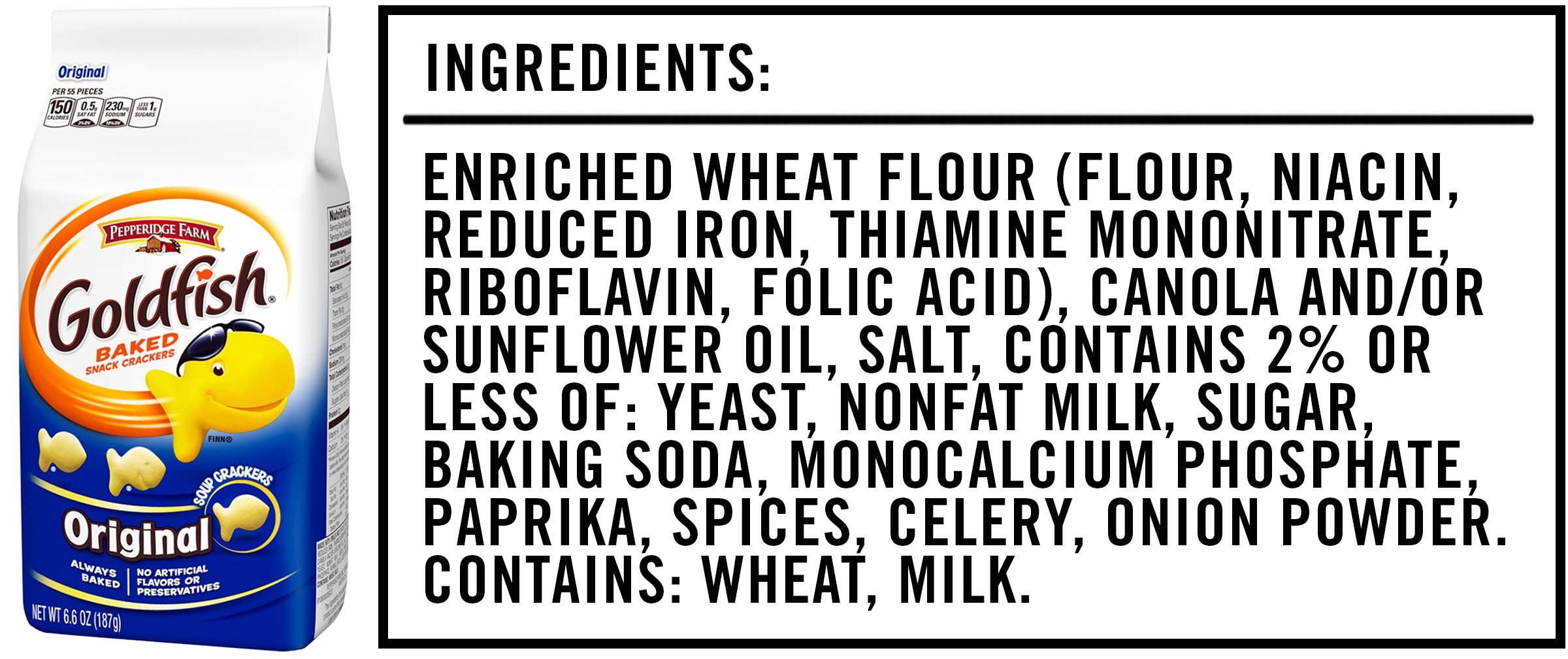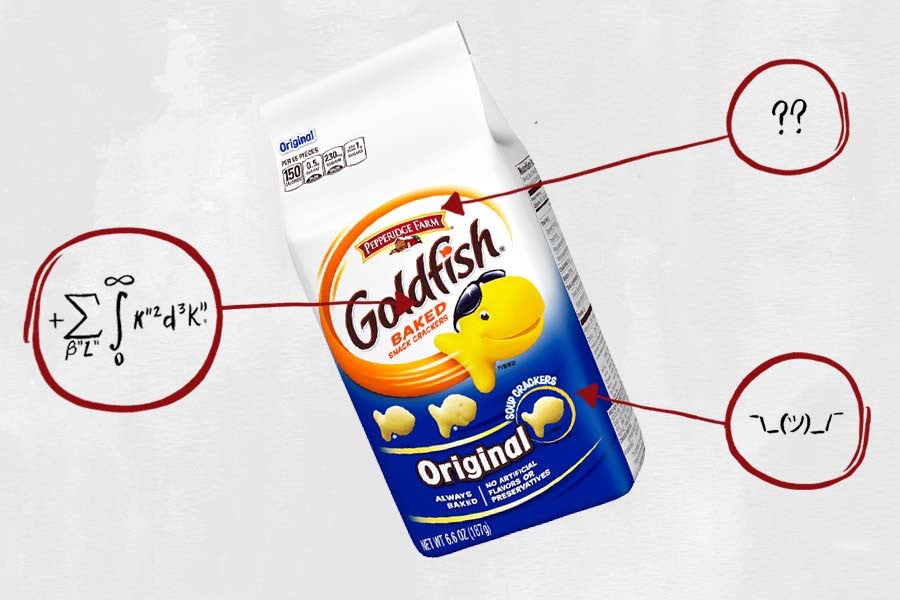We’re often told that you should never eat anything (or put anything on your body) if you don’t recognize everything on the ingredients list. But since most of us have no idea what xanthan gum or potassium benzoate are — or more importantly, what they’re doing to our bodies — we’re decoding the ingredients in the many things Americans put in (and on) themselves with the help of an expert.
This edition: Goldfish Original, which are made from 13 separate ingredients that we’ve broken down in the exact order they appear on their website.
The Ingredients
1) Smiles: “Smiles” are actually on this ingredients list, and I’m not even mad about it.
2) Enriched Wheat Flour (Flour, Niacin, Reduced Iron, Thiamine Mononitrate, Riboflavin, Folic Acid): As we learned in our exploration of the many, many, many ingredients in the McDonald’s Big Mac, enriched flour isn’t actually “enriched” at all. In addition to containing more calories than whole wheat flour, the bleaching process enriched flour often undergoes produces an unfortunate byproduct: A chemical called alloxan, which has been found to induce diabetes in lab-animal test subjects by destroying their pancreas.

3) Canola and/or Sunflower Oil: Physician and biochemist Cate Shanahan, author of Deep Nutrition: Why Your Genes Need Traditional Food, previously told us that consuming too much vegetable oil (sunflower, canola or corn) — which is easy to do, considering she says roughly 45 percent of the average American’s calories come from refined oils — has serious repercussions (i.e., fatty liver disease, insulin resistance and migraines). While it’s nearly impossible to eliminate vegetable oil from your diet altogether — major contributors include processed foods, fried foods, frozen pizzas, cakes, cookies, margarines and coffee creamers — it’s best consumed in moderation.
4) Salt: For flavor.
5) Yeast: The fungus that causes dough to rise.
6) Nonfat Milk: This probably provides a creamier flavor and texture.
7) Sugar: For sweetness.
8) Baking Soda: Baking soda is often used as a leavening agent, causing dough to rise and become porous by increasing the surface area.
9) Monocalcium Phosphate: In baked goods, monocalcium phosphate reacts with baking soda to produce carbon dioxide, which helps the dough rise. When consumed in moderation, this ingredient isn’t anything to worry about. That said, an excessive amount of phosphates in the diet, particularly when contained in processed foods like Goldfish, can accelerate the aging process, increase the risk of heart disease and place undue stress on the kidneys.
10) Paprika: This gives Goldfish their orange color.
11) Spices: What these spices are remains a mystery, because as we learned in our exploration of the ingredients in nacho-flavored Doritos, the FDA doesn’t require food labelers to list each spice by their specific name (as a means of protecting their recipes) so long as it follows their definition of the word “spice”:
“The term spice means any aromatic vegetable substance in the whole, broken or ground form, except for those substances which have been traditionally regarded as foods, such as onions, garlic and celery; whose significant function in food is seasoning rather than nutritional; that is true to name; and from which no portion of any volatile oil or other flavoring principle has been removed.”
12) Celery: For more flavor.
13) Onion Powder: This is an easy one — dehydrated, ground onion used for flavoring.
The Takeaway
All things considered, Goldfish are relatively harmless. They consist primarily of enriched wheat flour and vegetable oil, neither of which are healthy in large amounts. But honestly, you would have to eat a fuckton of Goldfish to warrant concern (55 pieces amounts to only 150 calories!)
So go ahead, eat those Goldfish without regrets. You deserve the smiles.

